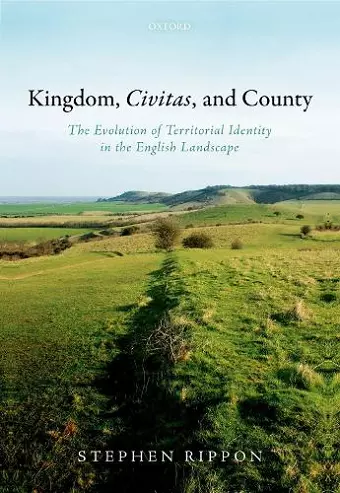Kingdom, Civitas, and County
The Evolution of Territorial Identity in the English Landscape
Format:Hardback
Publisher:Oxford University Press
Published:19th Apr '18
Currently unavailable, and unfortunately no date known when it will be back

This book explores the development of territorial identity in the late prehistoric, Roman, and early medieval periods. Over the course of the Iron Age, a series of marked regional variations in material culture and landscape character emerged across eastern England that reflect the development of discrete zones of social and economic interaction. The boundaries between these zones appear to have run through sparsely settled areas of the landscape on high ground, and corresponded to a series of kingdoms that emerged during the Late Iron Age. In eastern England at least, these pre-Roman socio-economic territories appear to have survived throughout the Roman period despite a trend towards cultural homogenization brought about by Romanization. Although there is no direct evidence for the relationship between these socio-economic zones and the Roman administrative territories known as civitates, they probably corresponded very closely. The fifth century saw some Anglo-Saxon immigration but whereas in East Anglia these communities spread out across much of the landscape, in the Northern Thames Basin they appear to have been restricted to certain coastal and estuarine districts. The remaining areas continued to be occupied by a substantial native British population, including much of the East Saxon kingdom (very little of which appears to have been 'Saxon'). By the sixth century a series of regionally distinct identities - that can be regarded as separate ethnic groups - had developed which corresponded very closely to those that had emerged during the late prehistoric and Roman periods. These ancient regional identities survived through to the Viking incursions, whereafter they were swept away following the English re-conquest and replaced with the counties with which we are familiar today.
[A]mbitious undertaking * CHOICE *
...the book is produced to a very high standard, the GIS-generated mapping being particularly clear and accomplished...Overall, I'd heartily recommend this book as an impressive illustration of the power of 'Big Data' to generate sophisticated and regionallynuanced narratives of the making of the English landscape. * Gabor Thomas, University of Reading, Medieval Settlement Research *
The ambition of this important study is to trace the degree of continuity between Iron-Age tribal territories, Roman civitates and early Anglo-Saxon kingdoms ... It is now up to scholars of other regions to build upon this excellent work. * Michael Shapland, Medieval Archaeology *
Stephen Rippon's recent book is a research feat of some significance. Its strength lies in that it does not adopt the constricted view of many earlier studies set within the narrow scope of particular disciplines or time periods, perpetuating beliefs that went unquestioned for many years and can still be met today in less academic circles. The view that early British cultural traditions decayed in the wake of the Anglo-Saxon invasions, or the opposite idea that later boundaries such as the early medieval diocesan boundaries necessarily reflected those of earlier territorial groupings, are put under close scrutiny. * Della Hooke, Landscape History *
Underlying the work is a huge amount of data, and Stephen has done extraordinarly well to make sense of it ... In short, the book is a triumph. * Edward Biddulph, Current Archaeology *
ISBN: 9780198759379
Dimensions: 250mm x 178mm x 29mm
Weight: 1062g
464 pages